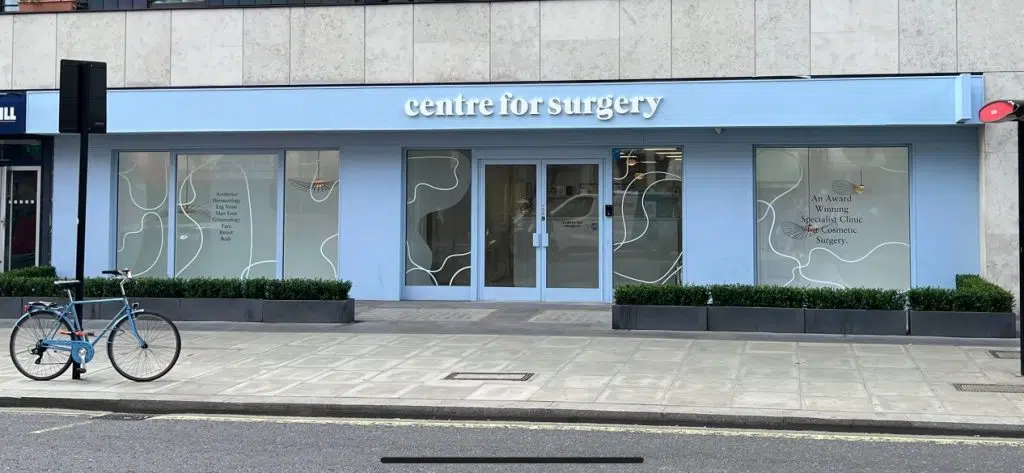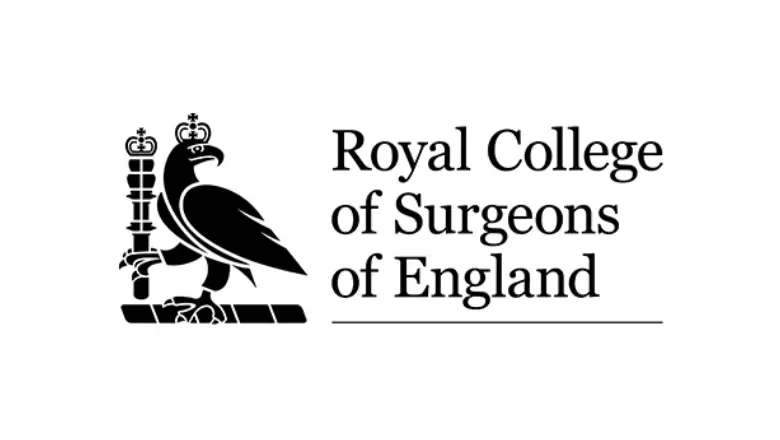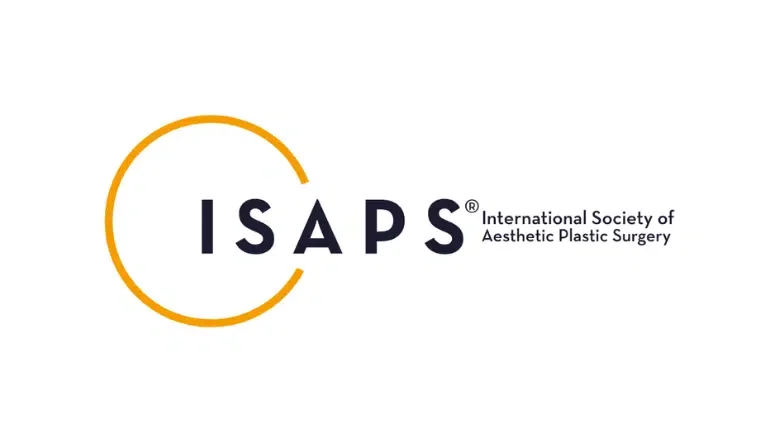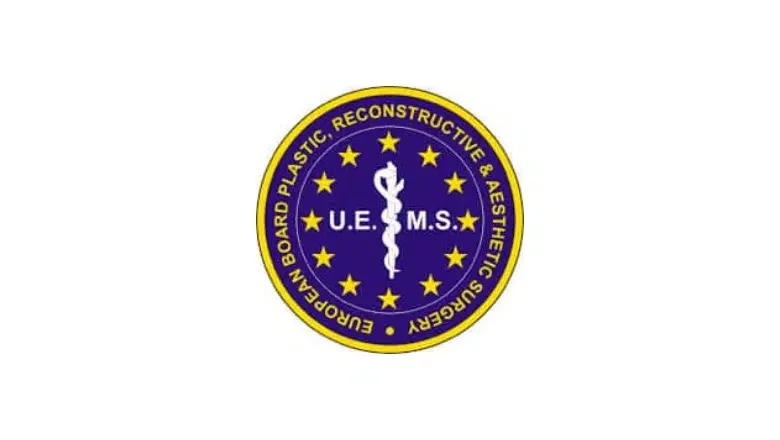Can Diastasis Recti be Fixed?
Pregnancy can result in significant changes to a woman’s body, including a persistent bulge around the tummy area, which may be associated with excess fullness in the lower abdomen, also known as a post-pregnancy pouch. Abdominal muscles may become permanently separated after childbirth, known as diastasis recti or abdominal separation. Abdominal separation can be effectively treated with a tummy tuck to achieve a toned and flat abdomen.
RELATED: What Does a Torn Stomach Muscle Feel Like? – How to Fix Diastasis Recti
What is abdominal separation?
Abdominal separation is also known as diastasis recti. The abdominal muscles are primarily composed of the rectus abdominis which are the muscles located near the midline of the stomach. During pregnancy, the enlarging uterus expands outwards and results in the separation of the two parallel abdominal muscles, which lie on either side of the midline. As the baby begins to enlarge during the later stages of pregnancy, the increased intra-abdominal pressure causes the overlying abdominal muscles to undergo abdominal separation. It is exacerbated by the hormonal surges which occur during the second half of pregnancy.
RELATED: Split Tummy Muscles after Pregnancy – Treatments for Diastasis Recti
The vast majority of women who undergo childbirth develop diastasis recti in the postpartum period. Certain women are more likely to develop abdominal separation, including:
- Those with weak abdominal muscles.
- Women who had more than one baby at delivery – twins or more.
- Women who have undergone multiple pregnancies in the past
- Older women, typically over the age of 35
What is Diastasis Recti?
Diastasis recti is a condition where the two large parallel bands of muscles that make up the rectus abdominis (commonly known as the “six-pack” muscles) separate along the midline of the abdomen. This separation is caused by the thinning and stretching of the linea alba, a connective tissue that runs vertically between the left and right sides of the abdominal muscles.
Diastasis recti is most commonly associated with pregnancy, as the growing uterus can cause the abdominal muscles to stretch and separate to accommodate the growing baby. However, it can also occur in men and women due to obesity, improper exercise techniques, or other factors that put excessive strain on the abdominal muscles.
Symptoms of diastasis recti may include a bulging or protruding abdomen, lower back pain, poor posture, and difficulty with certain movements that engage the core muscles. In some cases, diastasis recti can resolve on its own, but physical therapy, targeted exercises, or in more severe cases, surgery may be recommended to correct the issue.
What causes a bulging tummy after childbirth?
A bulging tummy after childbirth is a common concern for many women. Several factors contribute to this issue, and understanding these causes can help in addressing and managing the problem effectively. Here are the primary causes of a bulging tummy after childbirth:
- Pregnancy weight gain: During pregnancy, women gain weight as their body adapts to the growing fetus, with the weight distributed in various areas, including the abdomen. After childbirth, it takes time for the body to shed the extra weight, which can cause the tummy to appear bulging or protruding.
- Stretching of abdominal muscles: Pregnancy causes the abdominal muscles to stretch significantly to accommodate the growing uterus. This stretching can lead to a condition called diastasis recti, where the two sides of the rectus abdominis muscle (the “six-pack” muscle) separate, causing a bulge in the midline of the abdomen. Diastasis recti can persist even after childbirth, resulting in a protruding tummy.
- Hormonal changes: Hormones play a significant role during pregnancy and postpartum. Hormones such as progesterone and relaxin cause the connective tissues in the body to loosen, which can affect the abdominal muscles and fascia, leading to a bulging tummy. Additionally, fluctuations in hormone levels can also influence weight retention and distribution after childbirth.
- Slower metabolism: Metabolism tends to slow down during pregnancy and after childbirth. This decrease in metabolic rate makes it more challenging for the body to burn calories and lose weight, contributing to a bulging tummy.
- Weak pelvic floor muscles: Pregnancy and childbirth can weaken the pelvic floor muscles, which provide support to the abdominal organs. A weakened pelvic floor can cause the abdominal organs to sag, leading to a protruding tummy.
- Genetics: Some women may be genetically predisposed to retaining abdominal fat or experiencing muscle separation after childbirth. This genetic predisposition can make it more challenging for them to achieve a flat tummy after giving birth.
- C-section scarring: Women who undergo a caesarean section may experience a bulging tummy due to scar tissue and adhesions that form around the incision site. This scarring can cause the lower abdomen to appear pouch-like or protruding.
To address a bulging tummy after childbirth, a combination of lifestyle changes, such as a healthy diet, regular exercise, and targeted strengthening exercises for the abdominal and pelvic floor muscles, may be helpful. In some cases, medical intervention, such as physiotherapy or surgery, may be necessary to correct issues like diastasis recti or excess skin. It is essential to consult a plastic surgeon for personalised advice and guidance on managing a bulging tummy after childbirth.
What are the clinical features of diastasis recti?
Abdominal separation is most commonly characterised by an obvious bulge which is located in the middle part of the abdomen which has not gone away after childbirth. Some women may be able to visualise a clear gap between the two parts of the rectus abdominous muscles. This gap between the two muscles can be accentuated when women lie on their backs and with their heads raised. Bulging of the abdominal muscles may also lead to women developing back pain. Weakened abdominal muscles are less able to stabilise the lower back. Many women may also develop urinary incontinence or pelvic floor dysfunction due to damage to the pelvic floor during childbirth.
RELATED: Key facts about tummy tuck surgery & abdominoplasty
How can I tell if I have abdominal separation?
Diastasis recti can be easily identified by lying on your back with your knees bent and feet placed firmly on the floor. Your head should be gently raised whilst you place a hand along the middle part of your abdomen both above and below the umbilicus. With abdominal separation, a distinct gap can be felt in between your abdominal muscles, which may be more than 2 to 3 fingerbreadths in width.
We would recommend having an in-person consultation with a consultant plastic surgeon to determine whether you have diastasis recti.
Are there complications from diastasis recti?
Diastasis recti itself is not a life-threatening condition, but it can lead to some complications and discomforts if left untreated or not properly managed. Some potential complications and associated issues include:
- Lower back pain: Weakness in the abdominal muscles due to diastasis recti can lead to poor posture and increased strain on the lower back, resulting in discomfort or pain.
- Core instability: A weakened core can make it difficult to maintain balance, perform certain movements, and engage in activities that require core strength. This can limit physical activities and affect the overall quality of life.
- Gastrointestinal issues: In some cases, diastasis recti can contribute to digestive problems such as constipation, bloating, or acid reflux, due to weakened abdominal muscles and reduced support for the abdominal organs.
- Hernia: In severe cases of diastasis recti, the weakened connective tissue may not provide enough support for the abdominal organs, leading to the development of a hernia. A hernia occurs when an organ or tissue protrudes through the weakened area of the abdominal wall. Depending on the type and location, hernias may require surgical intervention.
- Psychological impact: The change in physical appearance due to diastasis recti can lead to self-esteem issues, body image concerns, or depression in some individuals.
What does diastasis recti feel like?
Diastasis recti can feel different for each person, and some may not experience any noticeable symptoms. However, common sensations and symptoms associated with diastasis recti include:
- A bulging or protruding abdomen: You may notice that your stomach appears to be pushing outward, creating a dome-like shape when you engage your abdominal muscles or perform certain movements, such as sitting up from a lying position.
- Palpable gap between the abdominal muscles: When lying down or engaging the core muscles, you may feel a gap or separation along the midline of your abdomen where the rectus abdominis muscles have separated. The width of this gap can vary among individuals.
- Lower back pain: Weakness in the abdominal muscles due to diastasis recti can lead to poor posture and increased strain on the lower back, resulting in discomfort or pain.
- Core instability: You may experience difficulty with core-engaging movements, such as maintaining balance, sitting up, or lifting objects.
- Gastrointestinal issues: In some cases, diastasis recti can contribute to digestive problems, such as constipation or bloating, due to weakened abdominal muscles.
Does diastasis recti go away on its own?
Whilst regular exercise and healthy eating can help to tone your body following pregnancy. Persistent abdominal bulging caused by abdominal separation can be affected by several factors, including:
- Your skin quality or elasticity
- How many times have you undergone childbirth
- The number of babies delivered and their birth weight
- How much weight you gained during pregnancy and then lost after childbirth
More than one-third of women who have undergone childbirth experience symptoms of diastasis recti. Diastasis recti does not go away on its own and cannot be improved in most cases by eating healthily and exercising regularly. The only way to repair weakened abdominal muscles after childbirth is to have an abdominoplasty with muscle repair.
What Happens If I Don’t Get Treated for Diastasis Recti?
If diastasis recti is left untreated, the condition may persist and lead to several long-term issues. Some potential consequences of not treating diastasis recti include:
- Chronic lower back pain: The weakened core muscles may result in persistent lower back pain, as they can no longer provide proper support and stability for the spine.
- Poor posture: Untreated diastasis recti can lead to long-term postural problems, as the abdominal muscles’ weakness can contribute to an exaggerated curve in the lower back and a forward pelvic tilt.
- Pelvic floor dysfunction: A weak abdominal wall can also affect the pelvic floor muscles, leading to issues such as urinary incontinence, pelvic organ prolapse, and pelvic pain.
- Hernia: The increased pressure on the abdominal wall due to diastasis recti may result in the development of hernias, such as umbilical or ventral hernias.
- Functional limitations: Weakness in the core muscles can cause difficulties in performing daily activities that require bending, lifting, or twisting, potentially limiting overall mobility and quality of life.
- Cosmetic concerns: Diastasis recti can cause a persistent bulging appearance in the abdomen, which may lead to self-esteem and body image issues.
- Compromised exercise performance: A weakened core may limit your ability to engage in core-strengthening exercises effectively, potentially impacting your overall fitness and exercise performance.
It is essential to consult a plastic surgeon at Centre for Surgery if you suspect diastasis recti, as early intervention can help manage the symptoms and prevent complications. A healthcare provider can recommend appropriate exercises, physiotherapy, or, in some cases, surgical interventions to address the condition and improve core strength and stability.
Which exercises are beneficial for diastasis recti?
Exercises that focus on strengthening the deep abdominal muscles, particularly the transverse abdominis, can be beneficial for diastasis recti. However, it is essential to consult a healthcare professional or a certified fitness expert before starting any exercise program to ensure that the exercises are appropriate for your specific condition. Some beneficial exercises for diastasis recti include:
- Pelvic tilts: Lie on your back with your knees bent and feet flat on the floor. Tighten your abdominal muscles, flattening your lower back against the floor, and gently tilt your pelvis upward. Hold for a few seconds, then release.
- Heel slides: While lying on your back with your knees bent and feet flat on the floor, slowly slide one heel along the floor away from your body, keeping your lower back pressed to the ground. Return to the starting position and repeat with the other leg.
- Toe taps: Lie on your back with your knees bent at a 90-degree angle and your feet lifted off the ground. Engage your core muscles and gently tap one foot on the ground, then return to the starting position. Repeat with the other foot.
- Modified plank: Start on your hands and knees with your hands directly under your shoulders and your knees under your hips. Engage your core muscles and maintain a straight line from your head to your hips. Hold for a few seconds, then release. As you become stronger, progress to a full plank position.
- Side-lying leg lifts: Lie on your side with your legs straight and your head resting on your arm. Tighten your abdominal muscles and lift your top leg upward while keeping your bottom leg on the ground. Lower the leg and repeat. Switch to the other side.
- Bird dog: Start on your hands and knees with your hands directly under your shoulders and your knees under your hips. Engage your core muscles, and simultaneously extend your right arm in front of you and your left leg behind you. Hold for a few seconds, then return to the starting position. Repeat with the opposite arm and leg.
- Seated abdominal bracing: Sit tall on a chair with your feet flat on the ground. Tighten your abdominal muscles as if you were bracing for a punch. Hold for a few seconds, then release.
What exercises should be avoided if I have abdominal separation?
Certain exercises and activities should be avoided to prevent diastases recti getting worse, including:
- Lifting heavy weights
- Abdominal crunches or planks
- Traditional push-ups
How common is diastasis recti in the UK?
There is limited data on the exact prevalence of diastasis recti in the UK. However, studies from various countries have shown that diastasis recti is a common condition, especially among pregnant women and postpartum mothers. Estimates suggest that about 33% to 60% of women may experience diastasis recti during pregnancy or after giving birth.
Can diastasis recti be corrected?
Abdominal separation can be effectively corrected with a tummy tuck or an abdominoplasty combined with muscle repair when regular physical exercise or physiotherapy has failed to achieve improvement.
RELATED: What is Diastasis Repair?
Can you fix diastasis recti without surgery?
In some cases, diastasis recti can be improved or resolved without surgery through conservative treatments such as physical therapy, targeted exercises, and lifestyle modifications. The goal of non-surgical treatment is to strengthen the abdominal muscles, improve core stability, and promote the healing of the connective tissue (linea alba). Some non-surgical treatment options include:
- Physiotherapy: A physiotherapist can create a personalised exercise program that targets the transverse abdominis and pelvic floor muscles, which are essential for core stability and support. They can also provide guidance on proper posture and body mechanics to reduce strain on the abdominal muscles.
- Targeted exercises: Focusing on exercises that strengthen the deep core muscles, such as the transverse abdominis, can help improve diastasis recti. Examples include pelvic tilts, deep abdominal breathing, and modified planks. It’s crucial to avoid exercises that may worsen the condition, such as traditional sit-ups, crunches, or any movement that causes the abdominal muscles to bulge outward.
- Lifestyle modifications: Maintaining a healthy body weight, practicing good posture, and avoiding activities that strain the abdominal muscles can help prevent diastasis recti from worsening and promote healing.
Wearing an abdominal binder or support garment: In some cases, wearing a support garment or binder may provide temporary relief and support for the abdominal muscles. It’s essential to consult a healthcare professional or physical therapist for recommendations and proper usage.
Can I get diastasis recti again?
Yes, it is possible to develop diastasis recti again after it has been resolved or improved, especially if the factors that initially caused the condition are still present. Some situations and factors that may increase the risk of diastasis recti recurrence include:
- Pregnancy: A subsequent pregnancy can cause the abdominal muscles and connective tissue to stretch and separate again, leading to the recurrence of diastasis recti.
- Excessive abdominal strain: Engaging in activities that place excessive strain on the abdominal muscles, such as heavy lifting, improper exercise techniques, or intense core workouts, can contribute to the recurrence of diastasis recti.
- Rapid weight gain or obesity: Gaining a significant amount of weight in a short period or being obese can put pressure on the abdominal muscles and connective tissue, increasing the risk of diastasis recti recurrence.
- Ageing and hormonal changes: As people age, their muscles and connective tissues can weaken, making them more susceptible to diastasis recti. Hormonal changes may also play a role in the weakening of the connective tissue.
Why Choose Centre for Surgery for Diastasis Recti Treatment?
Leading Experts in Plastic Surgery
Centre for Surgery is your premier destination for plastic surgery treatments in London, specialising in a wide range of procedures including treatment for diastasis recti. Our highly qualified surgeons use state-of-the-art techniques to achieve optimal results.
Tailored Treatment Plans
We understand that every patient is unique. That’s why we offer bespoke treatment plans tailored to your specific condition, ensuring you get the best care possible.
Cutting-Edge Technology
Our clinic is equipped with the latest technology to provide the highest standard of care. Whether you opt for surgical or non-surgical treatment, you can be assured of the most advanced methods in diastasis recti care.
Exceptional Aftercare
Our commitment to your well-being doesn’t end after the procedure. We provide excellent aftercare services to monitor your recovery and offer continued support.
Accredited and Safe
Centre for Surgery is fully accredited by all relevant regulatory bodies, ensuring that you are in safe hands throughout your treatment journey.
What Our Patients Say:
“I can’t recommend Centre for Surgery enough! After years of feeling self-conscious, they’ve given me a new lease on life.” – Emily, Diastasis Recti Treatment
“The surgeons and staff at Centre for Surgery are truly exceptional. They took great care of me from start to finish.” – Sarah, Abdominoplasty
“After my pregnancy, I was worried I’d have to live with my abdominal separation forever. Thanks to Centre for Surgery, I’m back to feeling like myself again.” – Jane, Diastasis Recti Treatment
Ready for a Consultation?
Take the first step towards a more confident you. Schedule a consultation with our expert surgeons to discuss your treatment options for diastasis recti.
📞 Phone: 0207 993 4849
📧 Email: contact@centreforsurgery.com
📍 Address: 95-97 Baker Street, London W1U 6RN
Contact us today to book your consultation and begin your journey towards better health and well-being.











